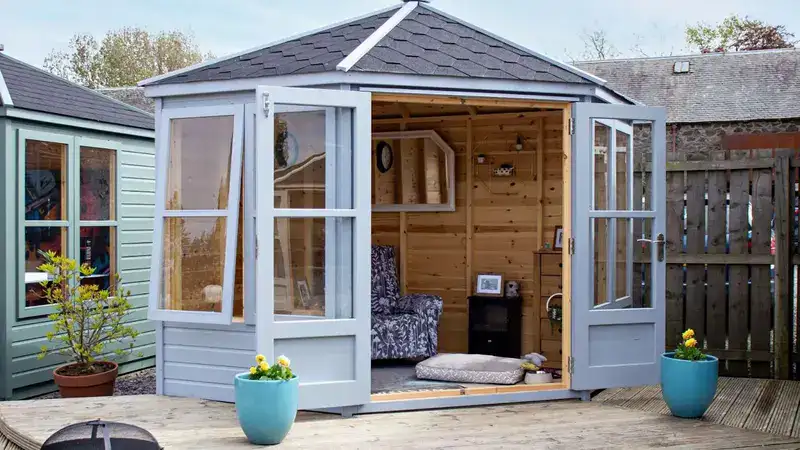Wondering how to keep your summer house comfortable year-round? Insulation for a summer house is the game-changer that regulates indoor temperatures, saves energy, and allows you to enjoy your space no matter the season. Did you know that proper insulation can cut energy bills by up to 30%? With nearly 25% of heat lost through uninsulated walls, investing in insulation for a summer house is one of the most efficient ways to maximize comfort and reduce costs.
In this article, we’ll cover everything you need to know about insulation for a summer house, from the best materials to eco-friendly options and cost breakdowns. Whether you’re looking to improve energy efficiency or create a cozy space all year long, proper insulation is key to getting the most out of your summer house.
Why Insulating Your Summer House is Essential
Insulation for a summer house serves multiple purposes, beyond just keeping it warm in the winter. During the summer months, insulation prevents excessive heat from entering, maintaining a cooler indoor environment. When winter rolls around, insulation helps to retain warmth, extending the usability of your summer house. Moreover, insulation reduces the need for artificial cooling or heating, leading to significant energy savings. Insulating a summer house is an eco-friendly step toward sustainability.
Top 10 Best Ideas for Summer House Insulation
1. Fiberglass Insulation
Cost: £5 – £8 per square meter.
Fiberglass insulation is one of the most widely used types, known for its affordability and effectiveness. It typically comes in rolls or batts and is installed between the studs in walls and the rafters in the ceiling. Fiberglass works by trapping air between the fibers, slowing the transfer of heat. It is an excellent choice for temperature control.
2. Foam Board Insulation
Cost: £10 – £15 per square meter.
Foam board insulation is a great option for its high thermal resistance in a compact form. It is available in large, rigid panels and can be installed on walls, floors, and ceilings. Foam board insulation is also moisture-resistant, making it ideal for humid conditions.
3. Reflective Foil Insulation
Cost: £4 – £6 per square meter.
Reflective foil insulation is highly effective in warm climates. It works by reflecting radiant heat away from the building, typically installed under the roof or in the attic. This type of insulation helps reduce solar heat gain, keeping your summer house cooler.
4. Spray Foam Insulation
Cost: £25 – £30 per square meter.
Spray foam insulation is known for its superior sealing properties. It expands upon application, filling small cracks and gaps to create an airtight barrier. It’s more expensive than other types, but its effectiveness at blocking air leaks makes it worth the investment.
5. Sheep Wool Insulation
Cost: £15 – £20 per square meter.
Sheep wool insulation is an eco-friendly option, providing excellent thermal and sound insulation. It regulates moisture, is biodegradable, and is a renewable resource, making it perfect for homeowners who prioritize sustainability.
6. Double-Glazed Windows
Cost: £200 – £300 per window.
Double-glazed windows help insulate your summer house by reducing heat transfer. These windows have two panes of glass separated by a gas-filled gap, acting as an insulating barrier to prevent heat loss in winter and keep heat out in summer.
7. Underfloor Insulation
Cost: £12 – £20 per square meter.
If your summer house is built on stilts or is raised from the ground, underfloor insulation is important to prevent heat loss in winter or heat gain in summer. Rigid foam boards or spray foam are effective for insulating floors.
8. Weatherstripping and Sealing Gaps
Cost: £5 – £10 per meter (DIY weatherstripping kits).
Even the best insulation won’t be effective if there are gaps around doors and windows. Weatherstripping is a simple, cost-effective solution to prevent drafts and air leaks, improving the energy efficiency of your summer house.
9. Cork Insulation
Cost: £20 – £30 per square meter.
Cork insulation is a natural material with excellent thermal and sound insulation properties. It’s moisture-resistant and biodegradable, making it a sustainable choice for insulating walls, floors, or ceilings.
10. Install Roof Vents
Cost: £30 – £50 per roof vent.
While insulation helps to keep the heat out, proper ventilation is equally important to prevent overheating. Roof vents allow hot air to escape, ensuring your summer house stays cool and well-ventilated.
Where to Insulate in a Summer House
For optimal temperature control, it’s important to insulate several key areas of your summer house:
- Walls: Insulating the walls is essential for reducing heat transfer. Materials like fiberglass, foam boards, or natural wool can be used to keep the summer house cool in summer and warm in winter.
- Roof/Ceiling: The roof is one of the biggest sources of heat gain during summer. Installing reflective foil insulation or fiberglass in the ceiling helps prevent heat from entering.
- Floors: Insulating the floor, especially if it’s raised from the ground, can prevent heat loss during winter and reduce heat absorption in summer. Foam boards or rigid insulation are ideal for underfloor insulation.
- Doors and Windows: As mentioned earlier, weatherstripping and double-glazed windows are crucial for preventing air leaks and maintaining temperature control.
Moisture and Ventilation Considerations
While insulation is key for temperature control, it’s equally important to consider moisture management and ventilation. Moisture can damage insulation materials and lead to mold, especially in humid environments. Choosing moisture-resistant insulation materials like spray foam or reflective insulation can help prevent this issue. Proper ventilation, such as roof vents, is necessary to keep air flowing and prevent the buildup of hot, stagnant air.
Eco-Friendly Insulation Options
For eco-conscious homeowners, eco-friendly insulation materials like sheep wool, cork, and recycled denim offer excellent thermal properties while minimizing environmental impact. These materials are renewable and sustainable, and offer good insulation for a summer house. They also tend to regulate moisture naturally, helping to keep your summer house dry and comfortable.
Cost Considerations
The cost of insulating a summer house can vary depending on several factors, including the size of the building, the type of insulation, and whether you opt for DIY installation or hire professionals. Here’s a quick cost breakdown for different insulation types:
- Fiberglass insulation: £5 – £8 per square meter (DIY-friendly).
- Foam board insulation: £10 – £15 per square meter.
- Reflective foil insulation: £4 – £6 per square meter.
- Spray foam insulation: £25 – £30 per square meter (professional installation recommended).
- Sheep wool insulation: £15 – £20 per square meter.
- Double-glazed windows: £200 – £300 per window.
- Underfloor insulation: £12 – £20 per square meter.
- Weatherstripping: £5 – £10 per meter (DIY kits available).
- Cork insulation: £20 – £30 per square meter.
Though some options, like spray foam and double-glazing, can be more expensive upfront, they provide long-term energy savings, which can offset the initial cost.
Conclusion
In summary, insulation for a summer house is a vital investment that enhances comfort, reduces energy usage, and extends the usability of the space throughout the year. Whether you choose affordable options like fiberglass, eco-friendly materials like sheep wool, or high-performance solutions like spray foam, the benefits of insulating your summer house far outweigh the initial costs. By insulating key areas such as the walls, roof, and floors, and addressing gaps around doors and windows, you can create a cozy, energy-efficient retreat that you can enjoy in all seasons.

